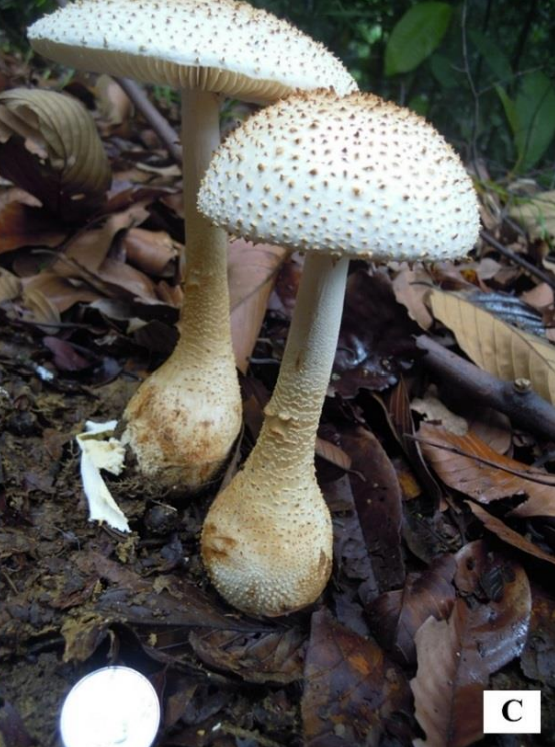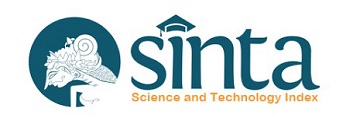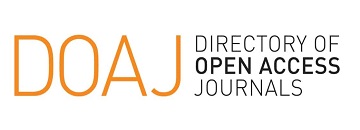The species of Amanita mushroom at Haurbentes Research Forest, West Java

Downloads
Downloads
Assyov, B., Bozok, F., Yarar, M., Slavova, M., & Taşkın, H. (2021). A contribution to Amanita alseides, a recently described European species in the section Vaginatae. Botanica Serbica, 45(1), 143–148.
Boedijn, K. B. (1951). Notes on Indonesian fungi. Sydowia, 5(2), 317–327.
Deng, W. Q., Li, T. H., Li, P., & Yang, Z. L. (2014). A new species of Amanitasection Lepidella from South China. Mycological Progress, 13(2), 211–217.
Desjardin, D., Wood, M., & Stevens, F. (2016). California mushrooms: The comprehensive identification guide. Portland: Oregon.
Index Fungorum. (2021). Diambil pada tanggal 16 September 2021 dari http://www.indexfungorum.org.
Kim, C. S., Jo, J. W., Kwag, Y. N., Oh, J., Shrestha, B., Sung, G. H., & Han, S. K. (2013). Four newly recorded Amanita species in Korea: Amanitasect. Amanitaand sect.Vaginatae.Mycobiology,41(3),131–138.
Kuo, M. (2013). The genus Amanita.Diambil tanggal pada tanggal 16 September 2021 dari http://www.mushroomexpert.com.
Largent, D. (1973). How to identifymushrooms to genus I : macroscopic features. Eureka (USA): Mad River Press.
O’Dell, T. E., Lodge, D. J., & Mueller, G. M. (2004). Approaches to sampling macrofungi. in biodiversity of fungi: inventory and monotoring methods. San Diego: Elsevier Academic Press.
Pamoengkas, P., & Erizilina,E. (2019). Stand structure of unmanaged red meranti plantation (Shorea leprosulaMiq.) in Haurbentes Forest Research, Jasinga. Jurnal Pengelolaan Sumberdaya Alam Dan Lingkungan (Journal of Natural Resourcesand Environmental Management),9(1), 61–67.
Pusat Penelitian dan Pengembangan Hutan. (2010). Diambil pada tanggal 1 September 2021 dari http://puslitbanghut.or.id.
Putra, I. P., Amelya, M. P., Veronica, S., & Kurnianto, M. S. (2020). Fantastic fungi around us: a case study of IPBUniversity campus forest. Jurnal Pena Sains, 7(2), 68–82.
Putra, I. P., Sitompul, R., & Chalisya, N. (2018). Ragam dan potensi jamur makro asal Taman Wisata Mekarsari Jawa Barat. Al-Kauniyah: Jurnal Biologi, 11(2), 133–150.
Putra, I. P.(2021). Guide for Indonesia Macroscopic fungi Characterization: Part I-Description of Macroscopic Characteristics. Jurnal Penelitian Kehutanan Wallacea, 10(1), 25–37.
Rokuya, I., Yoshio, O., & Tsugia, H. (2011). Fungi of Japan. Japan: Yama-Kei Publishers.
Saba, M., Haelewaters, D., Fiaz, M., Khalid, A. N., & Pfister, D. H. (2019). Amanita mansehraensis, a new species in section vaginataefrom Pakistan. Phytotaxa, 401(3), 199.
Tang, L. P., Lee, S. S., Zeng, N. K., Cai, Q., Zhang, P., & Yang, Z. L. (2017). Notes on Amanitasection caesareaefrom Malaysia. Mycologia, 109(4), 557–567.
Thongbai, B., Tulloss, R. E., Miller, S. L., Hyde, K. D., Chen, J., Zhao, R., & Raspé, O. (2016). A new species and four new records of Amanita(Amanitaceae; Basidiomycota) from Northern Thailand. Phytotaxa, 286(4), 211–231.
Tulloss, R.E. (2021).About theAmanita family. in Tulloss RE, Yang ZL, eds.Amanitaceaestudies.Diambil pada tanggal 16 September 2021 dari http://www.amanitaceae.org.
Zhang, P., Tang, L. P., Cai, Q., & Xu, J. P. (2015). A review on the diversity, phylogeography and population genetics of Amanitamushrooms. Mycology, 6(2), 86–93.








